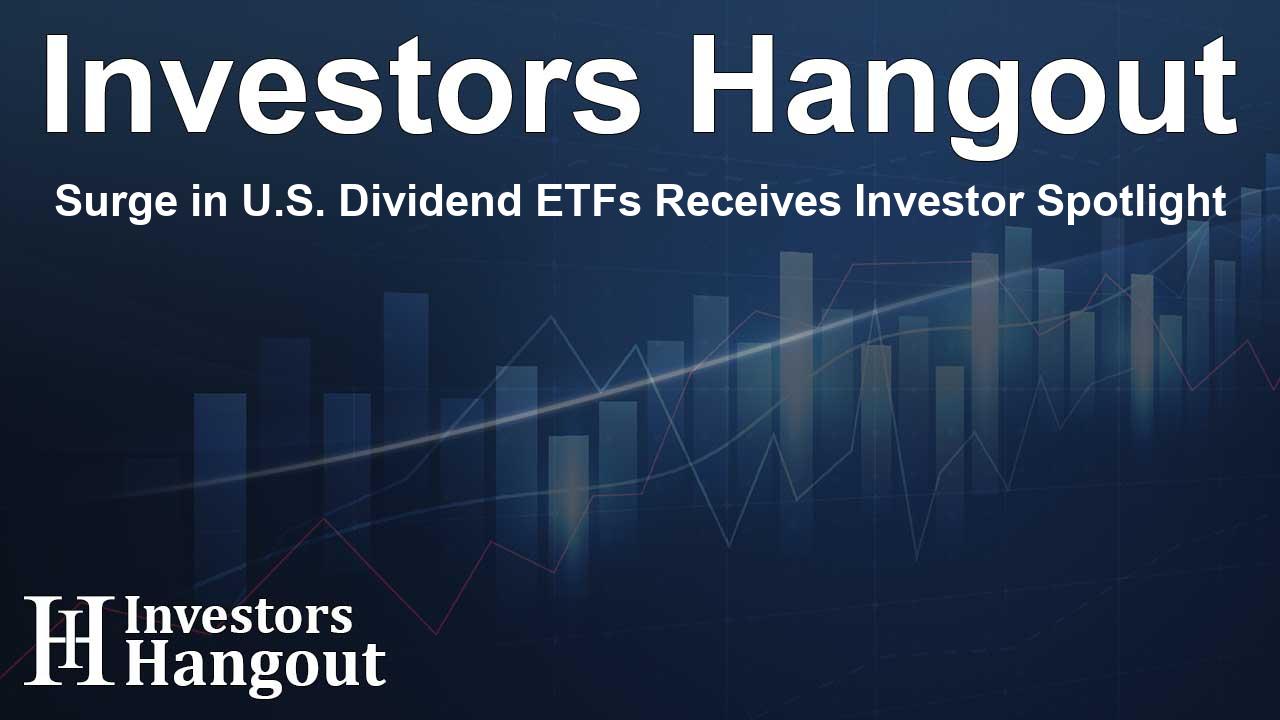Surge in U.S. Dividend ETFs Receives Investor Spotlight

Investors Turn to U.S. Dividend ETFs Amid Rate Changes
U.S. exchange-traded funds (ETFs) invested in dividend-paying stocks have recently captured heightened investor interest, particularly after significant shifts in Federal Reserve policy. With the central bank initiating its rate-cutting cycle, there has been a noticeable influx of capital into these dividend-focused assets. This upward trend comes as the market reacts to economic signals that suggest a stabilizing financial environment.
Massive Inflows to Dividend ETFs
During the month of September, a comprehensive group of 135 U.S. dividend ETFs observed inflows reaching approximately $3.05 billion. This starkly contrasts with the average monthly inflows of around $424 million experienced in the first eight months of 2024. The shift occurred following a pivotal decision by the Federal Reserve to cut interest rates by 50 basis points, marking its first reduction since 2020.
Market Response to Monetary Policy
The decision to lower interest rates was anticipated to unleash capital seeking new investment opportunities. Nick Kalivas, who oversees factor and equity ETF strategy at Invesco, noted that dividend-yielding stocks stand to gain significantly from this monetary policy shift. However, the continuation of this trend is uncertain as rising Treasury yields may pose challenges ahead.
Recent Trends and Market Conditions
In the weeks following the Fed's adjustments, benchmark 10-year Treasury yields have risen and recently reached two-month highs. This increase has arisen after unexpectedly strong employment figures indicated resilience within the economy. Such data suggests that the Federal Reserve may not need to implement further substantial rate cuts this year.
Valuation Concerns and Shifts in Investment Focus
Industry professionals, such as Josh Strange from Good Life Financial Advisors, highlight that the renewed interest in dividend stocks can be attributed to increasing valuations in growth sectors, particularly technology. The current valuation of the S&P 500 stands at 21.5 times future earnings estimates, substantially exceeding its long-term average of 15.7. This concentration of values around a few tech companies has raised alarms among investors regarding the sustainability of this growth.
Diverse Yield Opportunities in Dividend ETFs
The dividends offered by various ETFs fluctuate based on their investment strategies, typically ranging from slightly below 2% to as much as 3.6%. For context, benchmark 10-year Treasuries demonstrated yields around 3.6% during September. The diverse spectrum of dividend ETFs often includes sectors such as energy, finance, and pharmaceuticals, catering to different investor preferences.
Top Companies Featured in Dividend ETFs
Leading players such as Chevron Corp. (NYSE: CVX), JP Morgan Chase (NYSE: JPM), and Exxon Mobil (NYSE: XOM) frequently appear in these funds. Additional industries represented within dividend ETFs encompass utilities like Verizon (NYSE: VZ) and consumer giants such as Home Depot (NYSE: HD). This showcase of established companies highlights the strategy many investors employ to seek both income and stability.
Strategies for High Dividend Yields
Investors seeking substantial dividends must balance their desire for high payouts with the need for growth. Sean O'Hara, the president of Pacer ETFs, emphasized that it is critical to invest in companies with strong fundamentals that have the capacity to enhance their dividends over time. To mitigate risks, Pacer constructs ETF portfolios based on companies’ free cash flows, exemplified by their $24.8 billion Pacer US Cash Cows ETF, which has garnered $7.1 billion in inflows within the last year.
Frequently Asked Questions
What are dividend ETFs?
Dividend ETFs are investment funds that primarily include stocks of companies that pay dividends, allowing investors to receive regular income along with potential for capital appreciation.
Why did U.S. dividend ETFs attract more investment recently?
Investors have turned to dividend ETFs following the Federal Reserve's recent interest rate cuts, which triggered a search for income-generating investments in a changing economic landscape.
How do the yields from dividend ETFs compare to Treasury yields?
The yields from dividend ETFs can vary between 2% and 3.6%, which is similar to the yields of benchmark 10-year Treasuries, which were around 3.6% recently.
What types of companies are typically included in dividend ETFs?
Dividend ETFs often feature a mix of companies from energy, finance, utilities, and consumer sectors, including well-known firms like Chevron, JP Morgan Chase, and Home Depot.
How can investors manage risks associated with dividend stocks?
Investors can mitigate risks by focusing on companies with solid fundamentals and free cash flow, as seen in products like the Pacer US Cash Cows ETF, which emphasizes sustainable dividend payouts.
About Investors Hangout
Investors Hangout is a leading online stock forum for financial discussion and learning, offering a wide range of free tools and resources. It draws in traders of all levels, who exchange market knowledge, investigate trading tactics, and keep an eye on industry developments in real time. Featuring financial articles, stock message boards, quotes, charts, company profiles, and live news updates. Through cooperative learning and a wealth of informational resources, it helps users from novices creating their first portfolios to experts honing their techniques. Join Investors Hangout today: https://investorshangout.com/
Disclaimer: The content of this article is solely for general informational purposes only; it does not represent legal, financial, or investment advice. Investors Hangout does not offer financial advice; the author is not a licensed financial advisor. Consult a qualified advisor before making any financial or investment decisions based on this article. The author's interpretation of publicly available data shapes the opinions presented here; as a result, they should not be taken as advice to purchase, sell, or hold any securities mentioned or any other investments. The author does not guarantee the accuracy, completeness, or timeliness of any material, providing it "as is." Information and market conditions may change; past performance is not indicative of future outcomes. If any of the material offered here is inaccurate, please contact us for corrections.